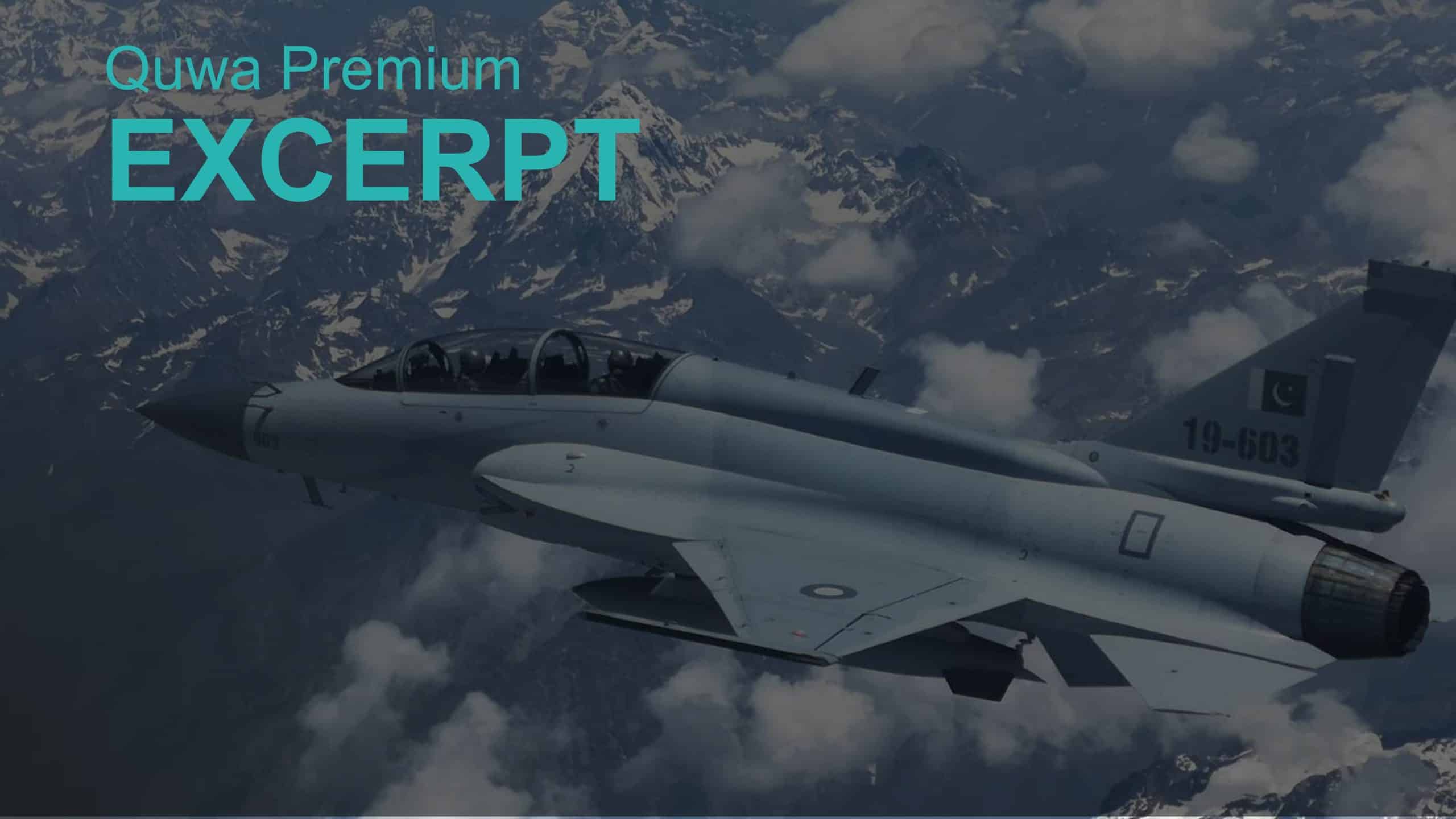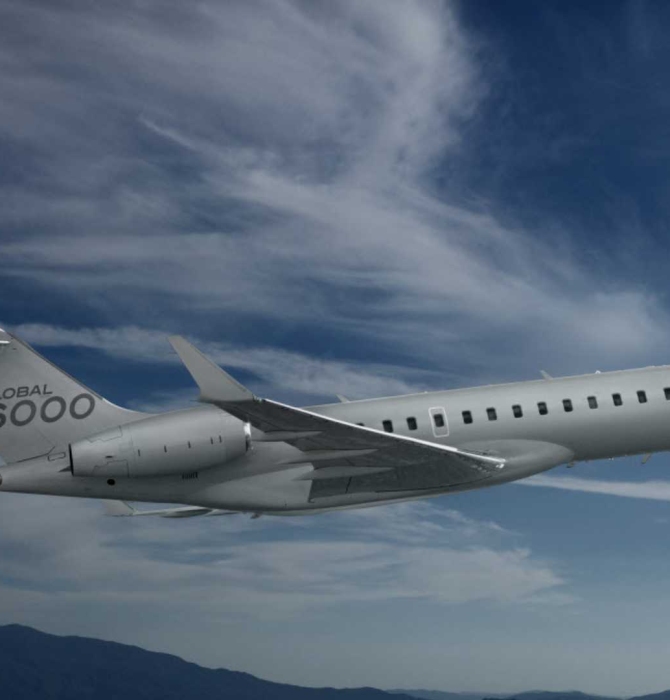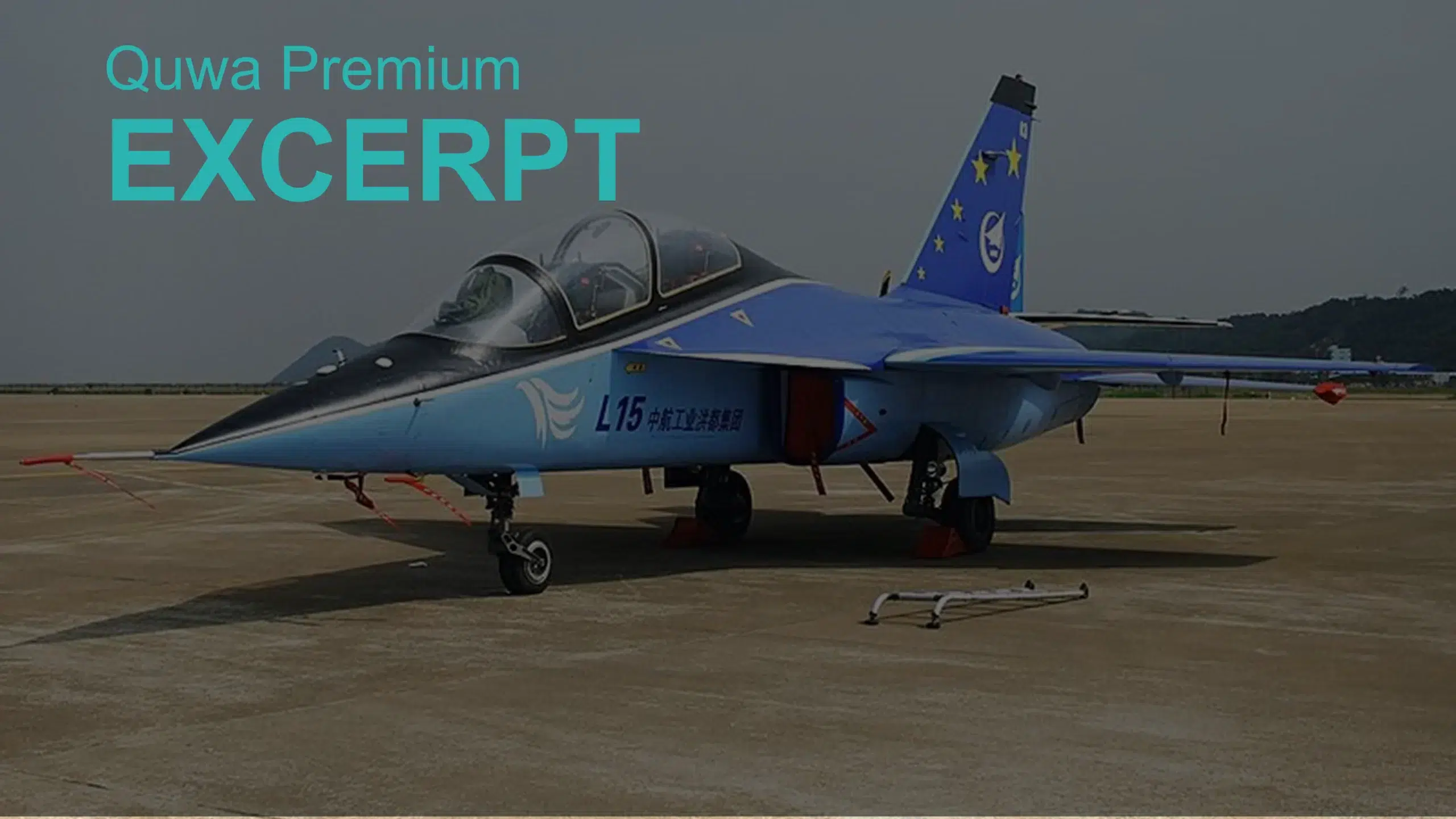1726Views

JF-17 Thunder: Giving 20 Important Years with Decades More to Come
It has been a little over 20 years since the maiden flight of the first JF-17 prototype. Since then, the fighter has undergone multiple iterations and, in turn, become Pakistan’s workhorse multirole fighter aircraft.
When it signed onto the Super-7/FC-1 project in 1994, the Pakistan Air Force (PAF) set out to acquire a low-cost, but reasonably capable, fighter to replace its aging Nanchang A-5s, Chengdu F-7Ps, and Dassault Mirage III and 5 combat aircraft. Strategically speaking, the PAF also needed a go-to asset that will continue supporting its air warfare needs irrespective of external factors, like sanctions, or internal problems, such as economic uncertainty or fiscal constraints. Thus, localization – notably from a production standpoint – was a critical aspect of the project. There was also hope that the JF-17 would appeal to many other states with similar geo-political and/or economic issues and, in turn, drive exports.
Though third-party export sales have yet to gain momentum, the PAF has largely achieved its most urgent goals when signing onto the JF-17. It needed a capable multirole fighter that was not beset by high pricing or deep supply-side constraints typically found in Western jets. While the JF-17 does not provide the same range or payload as many of those options, it helped the PAF induct modern air warfare capabilities – such as beyond-visual-range air-to-air missiles (BVRAAM), stand-off weapons (SOW), network-enabled warfare via tactical datalink (TDL) connectivity, and other elements – across most of its fleet. In some areas, such as active electronically scanned array (AESA) radars, the JF-17 helped drive net-new technology gains.
The PAF committed to procuring a baseline of 150 units; it is now on track to inducting a minimum of 168 aircraft across four variants – i.e., Block-1, Block-2, Block-3, and the two-seat JF-17B. The Thunder has met both the capability expectations and, in turn, fulfilled the PAF’s current fleet requirements. So, what is the direction of this program moving forward? What is the future of the JF-17?
Background
The PAF explored the idea of acquiring a lighter weight, lower cost supplement to the F-16 in the 1980s via the Sabre II program. This was a collaborative program involving the PAF, Chengdu Aircraft Corporation (CAC), and Grumman Aerospace of the U.S. The original idea was to significantly upgrade CAC’s F-7M with a new turbofan engine (e.g., PW1120), a redesigned forward fuselage with solid nose radome (housing a modern radar, like the AN/APG-66), and modern avionics suite. In some ways, the idea was similar to what Northrop did with its F-20 program, i.e., greatly evolving the Cold War-era F-5 with a modern powerplant and onboard electronics suite. In turn, the Sabre II would have also been technically capable of deploying BVRAAMs, a targeting pod, and SOWs such as anti-ship cruising missiles (ASCM).
However, a combination of Pakistan’s fiscal constraints and a chill in Sino-U.S. ties put the Sabre II project on the backburner. Fortunately, CAC continued working on the idea and, eventually, approached the PAF with a new clean sheet, lightweight single-engine fighter design, i.e., the FC-1/Super-7. Failing to procure an alternative to the F-16 (the sale of which the U.S. blocked in the 1990s due to Pakistan’s atomic weapons program), the PAF signed onto the FC-1/Super-7 in 1994, with development starting in 1999. Quwa wrote an article outlining the complete history of the program.
Current Status
Today, the JF-17 makes up the bulk of the PAF fighter fleet and is the most numerous of the PAF’s multirole fighters. With the newest Block-3 variant, the JF-17 is also a platform with cutting-edge technologies, such as AESA radars, helmet-mounted display and sight (HMD/S) systems, and high off-boresight (HOBS) air-to-air missile (AAM) compatibility, among other features.
Fleet Composition
The PAF’s JF-17s are deployed in six fighter squadrons, i.e., No.02 (Block-2), No.14 (Block-2), No.16 (Block-1, 2, 3, B), No.18 (JF-17B), No.26 (Block-1, 2), and No.28 (Block-1, 2). The JF-17s are also deployed at each of the PAF’s commands or theatres, i.e., North, Central, and South.[1]
In addition to the two-seat JF-17Bs operated by the Operational Conversion Unit (OCU) – i.e., No.18 – the PAF, according to the previous Chief of Air Staff (CAS), Air Chief Marshal (ACM), Mujahid Anwar Khan, also planned to provide each squadron with at least one JF-17B to assist them with operational training.[2] The PAF’s goal is to train its younger aircrew on its mainstay multirole fighters sooner (i.e., the F-16 and JF-17), especially as the F-7P and F-7PG (which had been the first platforms PAF pilots used to fly on) retire…
[1] Alan Warnes. “Pakistan’s Roaring Thunder.” Air Forces Monthly. May 2021
[2] Ibid
End of Excerpt (745/1,480 words)
You can read the complete article by logging in (click here) or subscribing to Quwa Premium (click here).
For more Pakistan Air Force news and analysis, check out:


